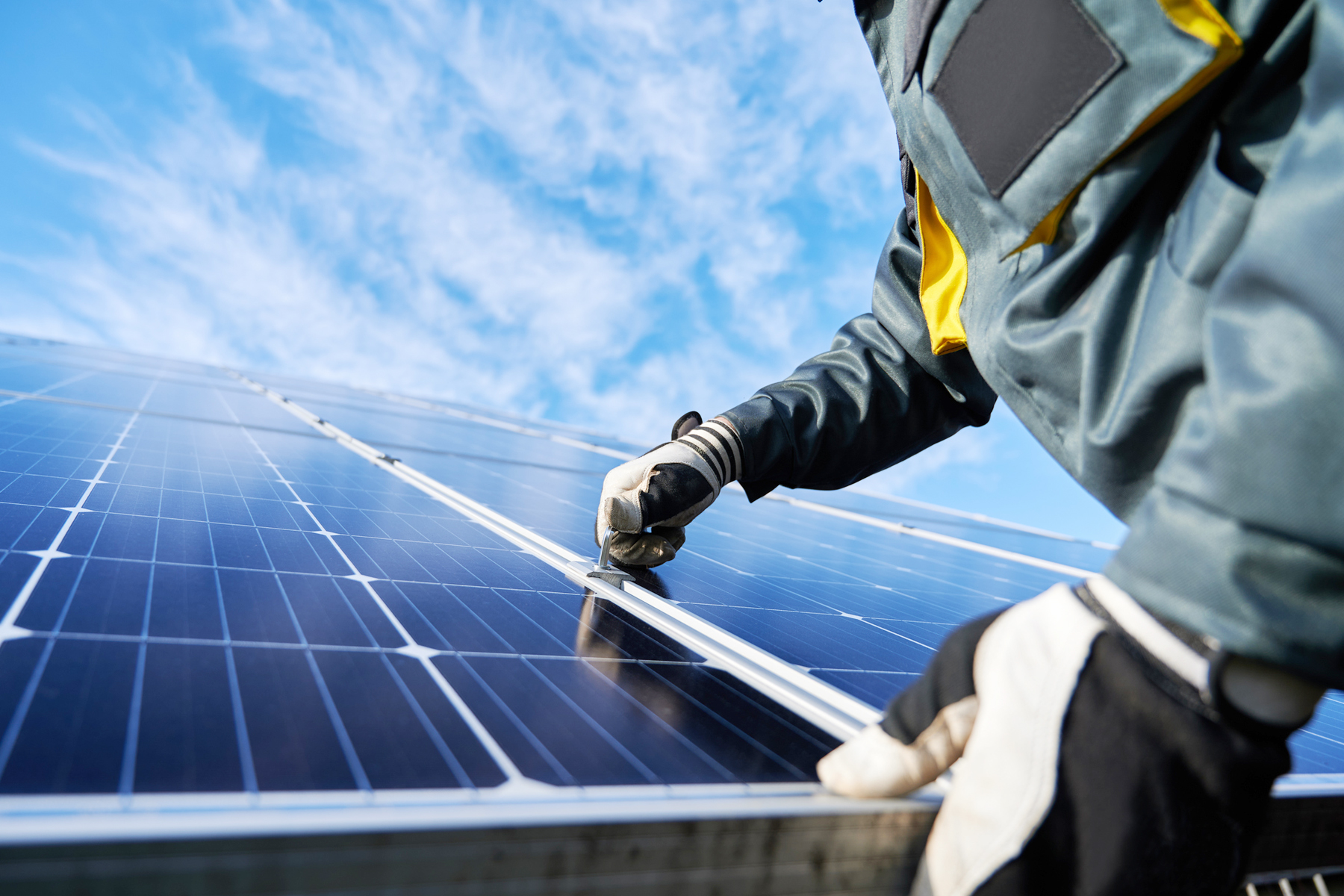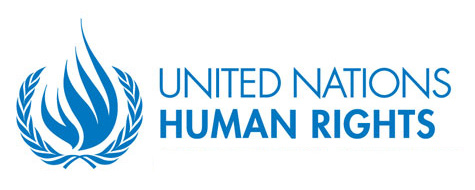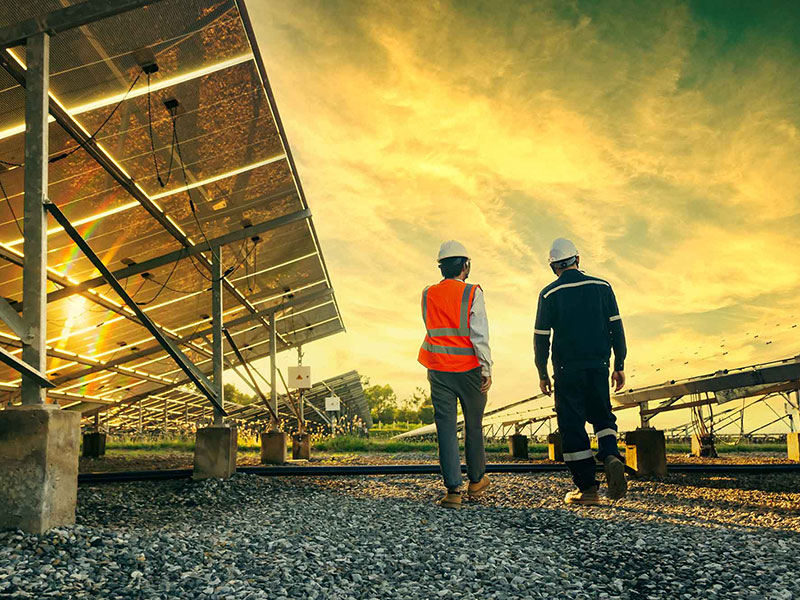This primer identifies the 10 most relevant, urgent, and probable human rights impacts for businesses operating in the renewable energy sector across the value chain. It offers opportunities for the renewable energy sector to promote the advancement of human rights, as a global and local sector that employs tens of millions of workers around the world. Given that the sector is an essential contributor to a lasting reversal of the trend of rising CO2 emissions, managing risks is crucial to preventing harm as well as to ensuring that the energy transition is not derailed.
This information is gathered from BSR’s direct engagement with energy companies, as well as our 30 years of experience helping companies in all sectors manage their human rights risks.
Human rights are inherent to all people, regardless of nationality, sex, national or ethnic origin, color, religion, language, or any other status. They are globally agreed upon standards of achievement for all people, covering a wide range of independent yet interconnected civil, political, economic, social, cultural, and environmental rights that serve as a ‘code of conduct’ for all human beings.
All companies can impact human rights either positively or negatively through their action or inactions. The UN Guiding Principles on Business and Human Rights (UNGPs) is the authoritative global standard on business and human rights and while technically ‘soft law’, the UNGPs have been incorporated into the OECD Guidelines for Multinational Enterprises, ISO 26000, IFC Performance Standards, GRI, UN Sustainable Development Goals, and many other frameworks. The UNGPs are also the backbone of emerging legislation such as the Corporate Sustainability Due Diligence Directive of the European Union. They have also been endorsed by business and industry organizations representing thousands of companies, civil society organizations, NGOs, and member states of the United Nations.
As part of the corporate responsibility to respect human rights, the UNGPs require companies to actively identify and manage the negative human rights impacts to which they may cause or contribute to or to which they are linked through their business relationships.
The renewable energy sector comprises a wide range of businesses and activities, from manufacturing original equipment (e.g. solar panels, wind turbines, and other technologies), development of projects (project planning, permitting, and siting), building projects (construction and on-site delivery and installation), to operating renewable assets (e.g. utilities, independent power producers, etc.). It also includes a wide range of technologies and renewable energy sources and solutions for electricity production, including wind, solar, hydro, geothermal, and biomass as well as emerging ones like hydrogen and energy storage.
While each company has distinctive human rights risks based on their different value chain footprints and business models, this primer highlights common risks across the renewable energy sector to help companies in the renewable energy value chain identify, prevent, and mitigate adverse impacts on people in the course of doing business.
Top Human Rights Risks
1: Modern Slavery
In the renewable energy sector, modern slavery is of particular concern in the supply chain and for certain on-site activities that rely on contractors. In the raw materials supply chain, the sourcing of cobalt which is a critical mineral for energy storage and wind power, is associated with child labor risks in conflict affected and high-risk areas, in particular from the Democratic Republic of Congo. Forced labor can also be a concern in the sourcing of copper, cement, and zinc. For solar panels, the risk is significant across the key stages of the manufacturing process, due to heavy reliance on polysilicon from Xinjiang where there are growing concerns from the international community over forced labor practices related to the Uyghur population. Another activity that presents significant forced labor risks is the construction of renewable energy installations in certain markets where the construction contractors (and sub-contractors) may be heavily reliant on migrant labor and where renewable energy companies may lack visibility over their recruitment and working and living conditions.
Companies should work with suppliers, including on-site contractors to improve transparency, traceability, and monitoring of labor practices, identify and assess red flags, engage suppliers on good recruitment and employment practices, and seek to eliminate and address the root causes of modern slavery risks.
2: Working Conditions
Working conditions are of concern across the value chain and business activities of renewable energy companies. Workers in the renewable energy supply chain may be working above legal limits, subject to wage withholding or paid below the minimum wage, or denied benefits such as social security. For instance, in the electronics industry, including in the manufacturing of electronic components that go into renewable energy equipment, excessive working hours are highly documented in sourcing countries. On-site, common practices such as labor outsourcing and greater dependence on contractors for certain activities like construction, and servicing and maintenance could lead to a further decline in working conditions and effectiveness of workers representation.
Contractors’ workers, particularly those lower skilled or under short term contracts or assignments may be exposed to temporary employment, on-call work, or similar, which could lead to inadequate wages and benefits, limited rest periods and excessive working hours and overtime. In certain operating contexts, living conditions could also be a concern for contractors and subcontractor housed at / in the premises of project construction sites who can be at risk of not being provided adequate and safe accommodation - e.g., substandard lodging and housing, unhealthy and unsafe facilities.
Overall, companies should monitor closely third parties labor standards, including suppliers and on-site contractors, strive to maintain the highest standards across operations, engage business partners to prevent and address labor rights violations and poor labor practices, and finally give workers voice and ways to speak up through appropriate channels, including workers representation and grievance mechanisms.
3: Occupational Health and Safety
Acute occupational health and safety risks are widespread across the entire value chain including in the supply chain during construction activities and operations for maintenance and servicing. This is due to the nature of the business activities and operations. Examples include exposure to hazardous working conditions, failing to wear personal protective equipment, limited or lack of understanding of occupational health and safety processes, protocols and practices causing incidents and long-term occupational injuries.
Given the nature of the industry, the propensity for hazardous working conditions, and the likelihood of consequences on workers, occupational health and safety should be treated as a priority both at operations as well as in the supply chain, where engagement with business partners and with workers through training and close monitoring is critical, both on-site and off-site to ensure the highest standards.
Overall, companies should monitor closely their operations as well as their supply chains, strive to maintain the highest standards across operations, and engage their business partners to prevent and address occupational health and safety violations.
4: Discrimination and Harassment
Workplace discrimination is a widespread issue in renewable energy and is of concern both in supply chain as well as at company own operations. Discrimination can take various forms including unfair hiring practices, pay disparities, workplace harassment, and unfavorable treatment for women and minority groups in promotion and professional development. In the supply chain, this risk is present across almost all procurement categories and particularly prevalent in certain supply chains with low skilled female labor, including, for instance, in the electronics component manufacturing, in less formal supplier categories, such as janitorial and facility management services, and in general in industries or location of sourcing where discrimination is endemic and institutionalized.
For companies in the sector, especially those operating in global markets, respecting employees’ rights also means securing equal treatment and opportunities for every member of their diverse workforce, including women and other groups, tackling harmful behaviors, and identifying and addressing root causes as well as engaging with suppliers to do the same.
5: Bribery and Corruption
All companies, including renewable energy companies—especially those operating in countries with weak rule of law—are exposed to corruption risks. The renewables industry requires substantial capital investments, often with risks of forms of corruption like bribery, theft, collusion, and bid-rigging. Corruption in renewable energy markets also has an international dimension, driving corruption from the global north to developing countries. Corruption and bribery profoundly impact vulnerable communities, either by misdirecting funds that could be spent on healthcare, education, or other public goods, or by preventing participation in the democratic process.
As companies look at the intersection between corruption and human rights, it is critical that business ethics processes maintain a strong drive throughout the renewable energy project lifecycle, including assessing and understanding the political environment and related corruption risk factors, as well as conducting dedicated due diligence to identify and address project-specific risks.
6: Rights of Indigenous Peoples
Indigenous peoples have been subjected to social exclusion and large-scale expropriation of their land and resources for many years, and they continue to be impacted by business activities in their territories and ancestral lands. Impacts on Indigenous people from renewable energy projects include loss of land, livelihoods, and cultural integrity. In many cases, these communities face cumulative impacts and strains with projects being developed on territories that have already a history of exploitation of other resources, such as mining activities or in areas that, due to local conditions (e.g., wind corridors), are being overly exploited with multiple projects concurrently. Projects developed and operated in areas where tribal and indigenous peoples are present and / or on lands are tied to their cultural identities and livelihoods often face disagreements over proper community consultations and Free, Prior, and Informed Consent (FPIC). In cases where Indigenous people are not recognized under national laws, there are additional challenges related to identifying community representatives and accounting for legitimate voices in decision-making and agreements.
The FPIC process can be time and resource consuming for large scale infrastructure, let alone for relatively smaller scale projects like wind and solar farms. However, companies should strive to meet the highest standards possible and seek for consultations and meaningful agreements, including setting up special measures in countries where Indigenous peoples are not afforded recognition under national law.
7: Impacts on Local Communities
Renewable energy projects (and the infrastructure on which they are built) can enhance energy security and provide for rising energy demand. However, their construction may reduce access to resources by local communities or be perceived as in competition with other land uses (such as for agriculture). Land and forest clearing for new sites can limit access to or destroy traditional sites or natural resources that are vital sources of food, water, fuel, or medicine. These impacts may have ramifications far beyond the project boundaries, causing serious concerns to communities, and may not be immediately evident, as in the case of loss of cultural heritage or natural resources. Moreover, renewable energy projects or the associated infrastructure can be vulnerable to natural disasters or accidents and operational emergencies, including those deriving from the effect of climate change, and as a consequence have the potential to affect communities safety living in the vicinity of the operations.
Community engagement, including via the establishment of operational level grievance mechanisms, is a key tool and should inform project design and delivery, address concerns that could lead to significant opposition and delays, and impact community human rights. Robust, formalized community engagement processes include regular information-sharing and consultations as well as mechanisms for integrating community feedback and concerns into project development and decision-making. Finally, setting up appropriate human rights due diligence in project development could mean going beyond local requirements (with respect to e.g., permitting, Environmental and Social Impact Assessments (ESIAs), and Environmental Impact Assessments (EIAs)) and proactively addressing aspects that are not always present in these local frameworks for assessing and accounting for project level impacts.
8: Land Rights
Land enables access to resources critical for livelihoods, food production, social development, and conservation. Renewable energy project development often requires land acquisition. Impacts on land rights, including land grabs, are among the most frequently reported alleged abuses in the renewable energy sector. Unfair land acquisition, resettlement of communities, and changes in land use and access to land can result in human rights impacts for local communities. Typically land rights violations occur in countries with poor land governance, where land rights are not well-documented, or customary tenure rights such as pastoral grazing are not well-protected. In case of displacement of local communities due to a project, there is a risk that the population may not be adequately consulted, their needs or the impacts on their life not understood and ultimately leading to insufficient or inadequate compensation. For companies, this could mean facing increased costs, unforeseen delays, and potentially reputational and legal challenges related to alleged land grabs and land rights abuse.
Due diligence over land acquisition processes and recognition of customary law and tenure rights should be baseline practice for renewable energy companies acquiring or looking at acquiring for the purpose of the project long-term use or ownership rights for land. Even in countries with adequate protection of land rights, there could be significant tradeoffs related to competing uses of land which highlights the importance of appropriate land use planning and community engagement beginning in the early development stages.
9: Security Forces
Large-scale projects and operations in certain settings employ private security contractors or are provided with security by government forces. These entities may take actions against community members or employees themselves, exercising excessive use of force, thus violating human rights. Security forces are often necessary to protect staff and assets, especially in conflict-affected or weak-governance countries; however, use of such forces without adequate training, or with weapons in excess of their mandate, can give rise to serious violations, including life threatening situations, impacting community members and employees but also security forces themselves.
While private security contractors and government forces are distinct actors, companies should follow the Voluntary Principles on Security and Human Rights (VPSHR) and can use their influence with the government to ensure proper use of force and respect for human rights where applicable.
10: Human Rights Defenders
Human Rights Defenders are persons acting to address any human right (or rights) on behalf of individuals or groups and can be employees, community members, or others. Human rights defenders seek the promotion and protection of civil and political rights as well as the promotion, protection, and realization of economic, social, and cultural rights. They are often the target of repression through attacks and intimidation. Only in 2021, among the 615 attacks on Human Rights Defenders, nearly 70 percent were against climate, land, and environmental rights defenders. The renewable energy sector specifically is the one with the third highest number of threats against human rights defenders and attacks could occur in the communities located near project sites. The risk is also heightened in specific countries where freedom of expression is limited, or where the security situation is poor.
While oftentimes abuses on human rights defenders are perpetrated by other actors, companies should still assess how their presence and actions may be linked with impacts on human rights defenders and should consider their role in supporting the essential role they play and legitimating their voice. For instance, by developing concrete commitments to enable human rights defenders to do their work without interference, and when / where appropriate engage with them providing them with space to raise issues.
Top 3 Opportunities for Positive Impact
1: Just Transition
Renewable energy companies can support a just transition within the local communities where the project is being developed and deployed through supporting the creation of green jobs, including through fostering local diverse suppliers and implementing programs to provide access to technical education, technical knowledge transfer, and enhanced local skills. The energy transition has the potential to disrupt workforces and communities. While emission reduction and meeting 1.5 goal are paramount, rightsholders need to be put at the center of a just transition to ensure decent jobs and build inclusive societies.
2: Economic and Social Development
Renewable energy companies can provide support to essential services, including access to energy. Access to sustainable energy can transform lives; this is key to achieving rights related to health, food security, livelihoods, and education around the world. This may take the form of individual company initiatives or may entail collaborative efforts through public-private partnerships, community investment, or stakeholder engagement, for instance through installation of solar panels in remote villages or other similar initiatives. Community ownership models and benefit sharing are also potential tools for supporting local communities by making them participate in the projects and retain a share of the ownership and profits. This could take the form of joint ventures, equity allocation, transfer of ownership over time, and other benefit-sharing models depending on the available policy framework. Ultimately these models can increase communities' energy access, security, support energy independence, and local skills building. Finally, when benefits are visible and shared there is a lower risk of local resistance to the projects and a higher chance with the involvement of local communities that projects are done in a way that respects human rights and is least damaging to local environment and ecosystem.
3: Equity, Inclusion, and Justice
Through their presence in local communities, companies can support social and economic inclusion for the most vulnerable and ‘excluded’ thus enabling pathways to poverty alleviation and broader social development. This can include, for instance, support and investment in local communities’ services and activities (for example schools, care infrastructures, etc. where those limited or lacking) and policies and programs in support to local diverse suppliers that are owned or managed by local communities, including dedicating attention to ethnic / racially diverse / women owned local business partners, as well as provide entrepreneurship opportunities and programs for small local businesses. This should be informed by assessment of local needs, including engagement and consultations with local communities’ representatives to make sure support provided is meaningful and provides shared benefits.
Let’s talk about how BSR can help you to transform your business and achieve your sustainability goals.



